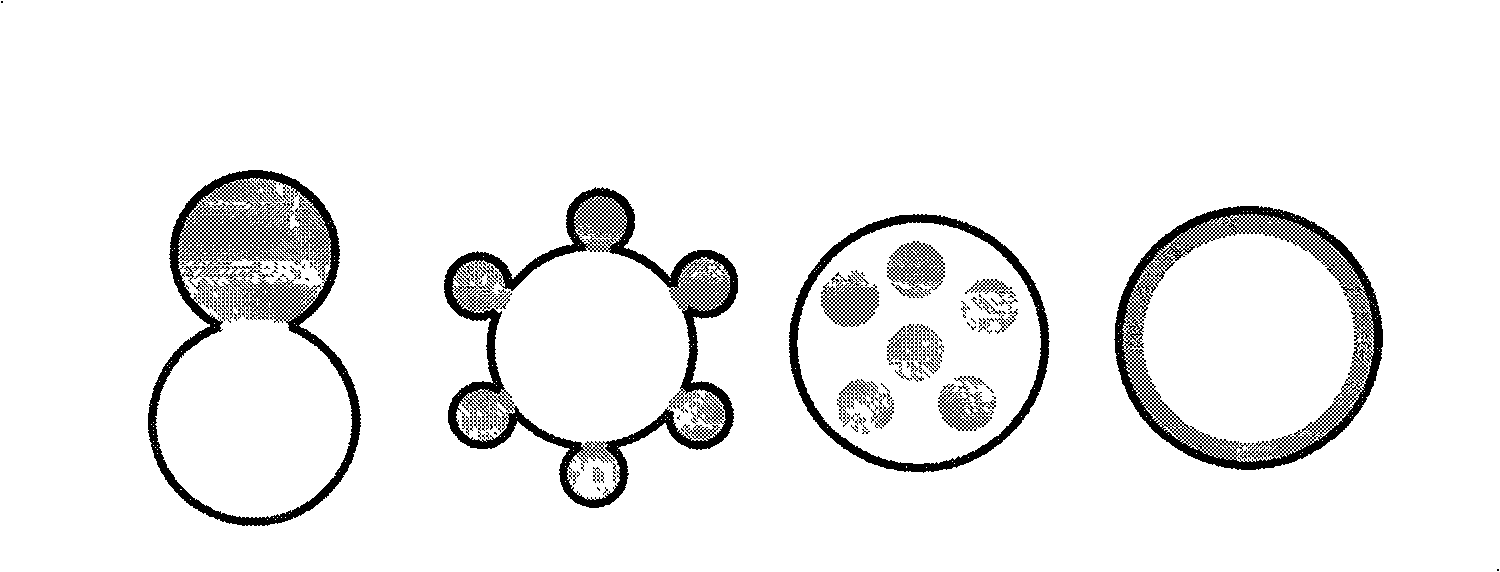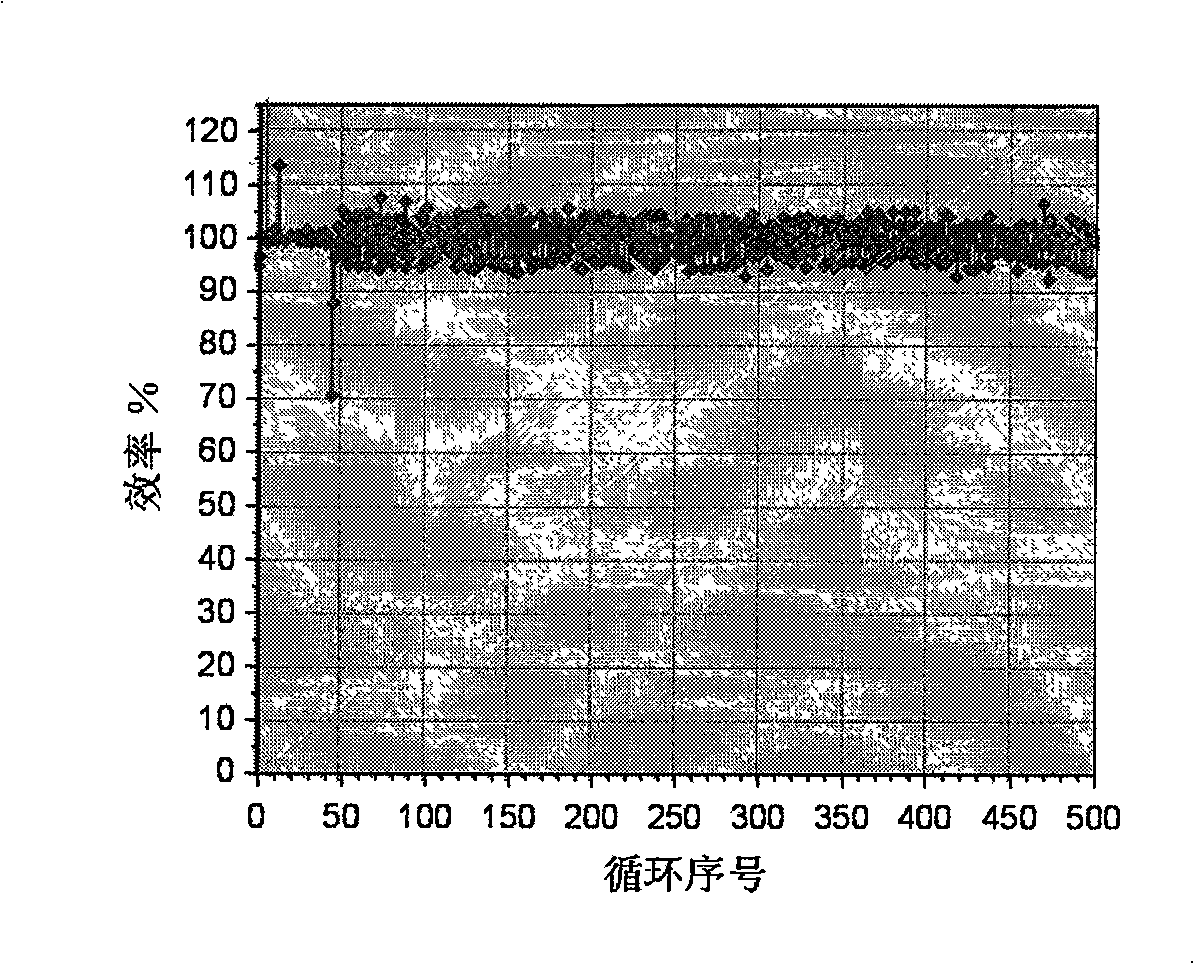Phosphate and lithium titanate composite anode material for lithium ion battery and method for producing the same
A composite cathode material, lithium ion battery technology, applied in electrode manufacturing, battery electrodes, chemical instruments and methods, etc. Density reduction and other problems, to ensure the diffusion performance of conductive carriers, fully conductive microstructure channels, and improve the effect of electrochemical properties
- Summary
- Abstract
- Description
- Claims
- Application Information
AI Technical Summary
Problems solved by technology
Method used
Image
Examples
Embodiment 1
[0026] A lithium ion battery composite lithium iron phosphate 95% LiFePO 4 -5% Li 4 Ti 5 o 12 The preparation method of the positive electrode material is to uniformly mix ferrous oxide, lithium oxide, and phosphorus pentoxide, and the molar ratio of phosphorus, iron, and lithium is determined according to the chemical formula, with 5% H 2 In the nitrogen atmosphere, the temperature was raised to 650°C within 5 hours, the reaction was kept for 8 hours, and then cooled to room temperature to obtain a composite material;
[0027] Lubricant graphite is added to the positive electrode composite material. The amount of the lubricant added is 5% of the weight of the composite material. After sufficient ball milling, the output is the positive electrode composite material. 0.2C / 0.2C rate capacity is greater than 155mAh g -1 , 1C / 1C rate charge and discharge specific capacity is 142mAh g -1 , the battery capacity does not decay after more than 500 cycles, and the efficiency is cl...
Embodiment 2
[0029] A lithium ion battery composite lithium iron phosphate 95% LiFePO 4 -5% Li 3 Ti 5 o 12 The preparation method of the positive electrode material is to uniformly mix iron hydroxide, lithium carbonate, titanium dioxide, and ammonium dihydrogen phosphate, determine the molar ratio according to the chemical formula, and use 5% H 2 In the nitrogen atmosphere, the temperature was raised to 500°C within 3 hours, the heat preservation reaction was carried out for 10 hours, and then cooled to room temperature to obtain a composite material;
[0030] Lubricant graphite is added to the positive electrode composite material. The amount of the lubricant added is 3% of the weight of the composite material. After sufficient ball milling, the output is the positive electrode composite material. 1C rate charge and discharge specific capacity is 138mAh g -1 , The battery capacity does not decay after more than 100 cycles.
Embodiment 3
[0032] A Lithium-Ion Battery Composite Lithium Iron Phosphate 90% LiFePO 4 -10% Li 2 Ti 5 o 12 The preparation method of the positive electrode material is to uniformly mix iron hydroxide, lithium carbonate, manganese dioxide, titanium dioxide, and ammonium dihydrogen phosphate, determine the molar ratio according to the chemical formula, and use 5% H 2 In the argon gas, the temperature was raised to 850 ° C within 10 hours, the reaction was kept for 4 hours, and then cooled to room temperature to obtain a composite material
[0033] Lubricant molybdenum disulfide is added to the positive electrode composite material, and the amount of lubricant added is 1% of the weight of the positive electrode composite material. After sufficient ball milling, the discharge is phosphate composite positive electrode material. 1C rate charge and discharge specific capacity is 142mAh g -1 , The battery capacity does not decay after more than 100 cycles.
PUM
 Login to View More
Login to View More Abstract
Description
Claims
Application Information
 Login to View More
Login to View More - R&D
- Intellectual Property
- Life Sciences
- Materials
- Tech Scout
- Unparalleled Data Quality
- Higher Quality Content
- 60% Fewer Hallucinations
Browse by: Latest US Patents, China's latest patents, Technical Efficacy Thesaurus, Application Domain, Technology Topic, Popular Technical Reports.
© 2025 PatSnap. All rights reserved.Legal|Privacy policy|Modern Slavery Act Transparency Statement|Sitemap|About US| Contact US: help@patsnap.com


